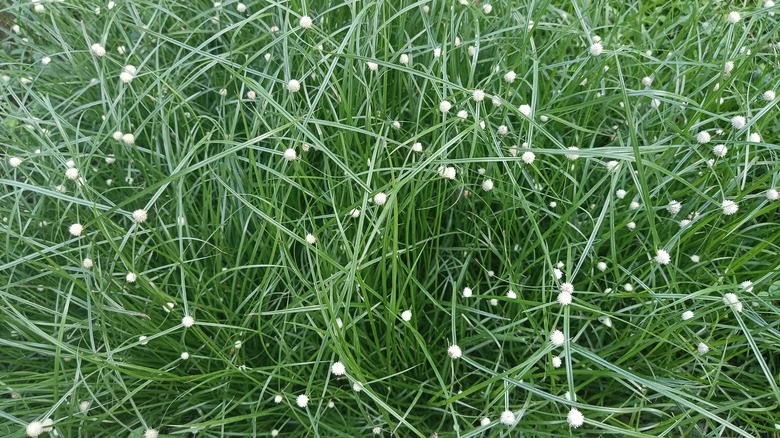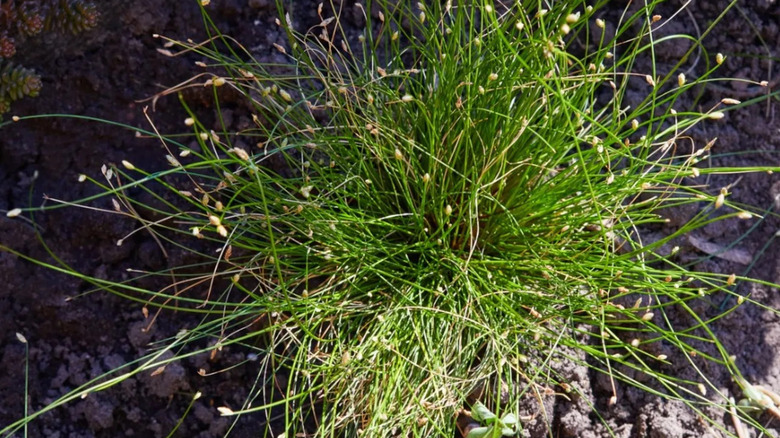What That Sudden Color Shift In Your Fiber Optic Grass Really Means
Have you ever done a double-take while watering your garden and spotted your once lush and lively fiber optic grass (Isolepis cernua) turning yellow or brown? It might be a little alarming at first because you may assume that the plant is dying. However, in most cases, this color change is a seasonal response or maybe a gentle reminder that the plant needs a little bit of care. Besides preparing for dormancy in cooler weather, fiber optic grass can change color if it's underwatered, exposed to too much sun, or grown in soil that dries out too quickly. So, before you head for the compost bin, take a closer look because this change may not always be bad news.
Fiber optic grass, despite its name, isn't a true grass, it is actually a sedge. Still, it behaves like other ornamental grasses in many ways. Native to regions like the North American west coast, New Zealand, Australia, and the British Isles, it thrives in moist, sunny conditions and is often grown in containers or near water features. It's hardy in USDA Hardiness Zones 8 to 11, meaning it does not tolerate freezing conditions well. When temperatures drop or days shorten in fall, its bright green foliage naturally fades to yellow or tan as it prepares for a dormant phase. So, it's better to bring the plant indoors and keep it in a sunny window on top of a tray with shallow water. This is all part of its normal lifecycle, so that sudden color shift might not mean trouble at all.
How to rrefresh your fiber optic grass
Fiber optic grass is an easy-to-grow ornamental grass that'll add unique texture to your yard. With its fine, hair-like blades tipped in silvery blooms, it creates a soft, flowing effect that feels almost magical in a garden or container display. While this sedge often thrives with minimal fuss, the brown color in the leaves can often make gardeners wonder how to restore its lively look. Fortunately, it is easy.
If the color change happens outside the usual season or comes on suddenly during warmer months, your grass may be reacting to dry soil rather than dropping temperatures. You can help it recover with a few simple steps. Begin by trimming any brown or yellow tips with clean, sharp scissors to encourage healthy new growth. Then water it thoroughly and keep the soil moist. Avoid pruning it in colder seasons because its growth is limited. For container-grown fiber optic grass, submerging it in enough water can also protect it from mealybugs.
If you feel inspired to add even more life and dimension to your garden, consider experimenting with other colorful ornamental grasses to add to your landscape. Try purple millet (Pennisetum glaucum) for bold, dramatic plumes or cloud grass (Agrostis nebulosa) for a soft, airy look that brightens any corner. These grasses thrive in full or partial sun, need minimal maintenance, and offer year-round visual interest with very little effort. Mix different colors and heights to create a layered, lively landscape that looks fresh in every season. Ornamental grasses can transform plain garden beds into vibrant, textured spaces, and they deserve to be center stage rather than just background plants.

